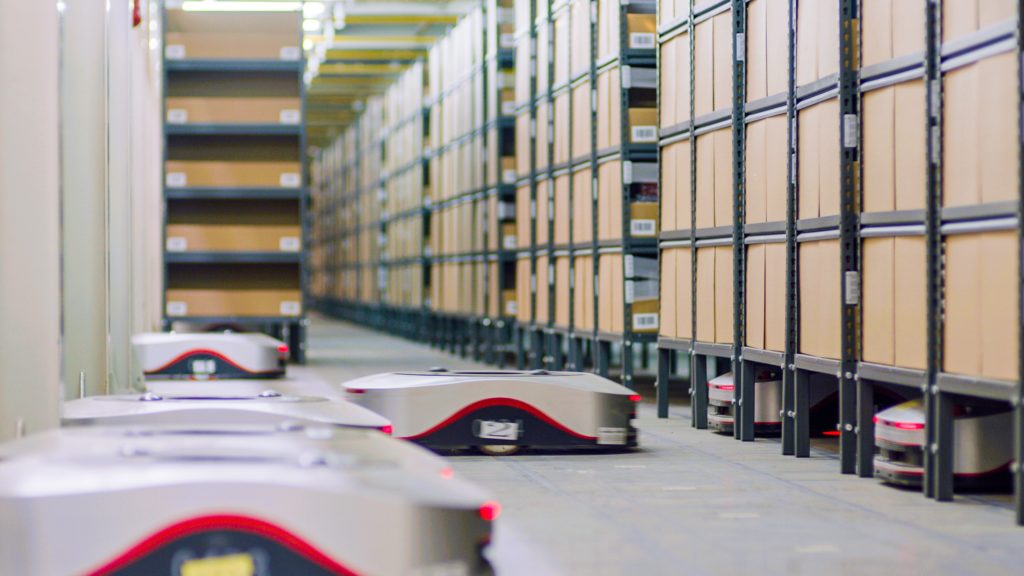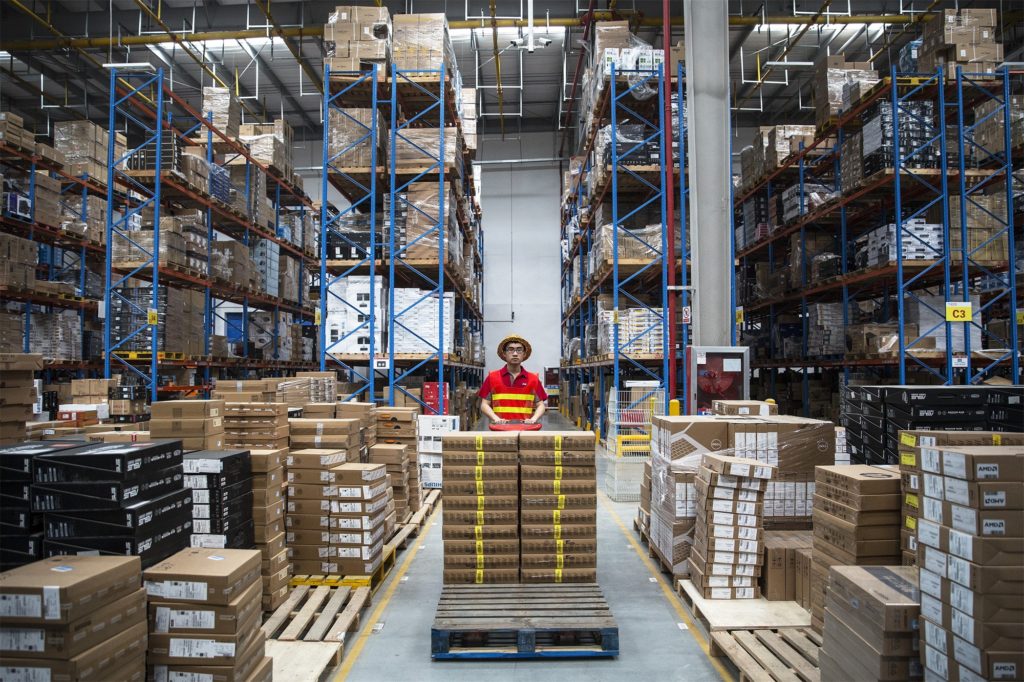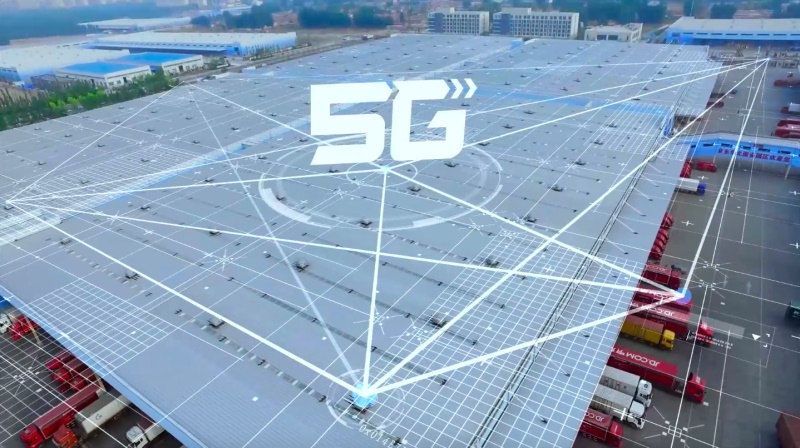Mar 9, 2020|
In-Depth Report: Shared Supply Chain, Shared Future
by Ling Cao
One thing people may not know about JD.com is why it can provide fast and reliable delivery to its over 360 million active customers, even though quite a lot of them take it for granted.
The answer is simple: an integrated, technology-driven supply chain network, which JD manages digitally. The sudden outbreak of COVID-19 has tested the capability and reliability of JD’s supply chain, and the well-organized network has made sure that over 6,000 tons of medical supplies and daily necessities have been transported to Hubei to date.
Furthermore, JD is opening up its logistics capabilities to third parties. This includes building a supply chain management platform for governments, which makes emergency supplies such as masks, goggles, and protective gear easier to manage, distribute and trace digitally. This platform is also open to SMEs to provide services covering planning, replenishment and analysis. JD is also providing free software to small and micro enterprises to help them get back to work, which helps them become digitized and improve fulfillment efficiency.
An Open Platform
An agile supply chain makes a great difference to an organization, and companies have started to care. According to Gartner, the supply chain management software market grew by 12.5% to $14 billion (RMB 97 billion) in 2018. The Internet has created omnichannel shopping scenarios. The supply chain is not just relying on how much a company should supply, but also on how much supply consumers need. A technology-powered digital supply chain plays important role.
JD is an e-commerce logistics leader in China. Its whole network has built from scratch a dozen years ago. JD has accumulated experience in terms of how to run an efficient supply chain from managing its own inventory covering a wide range of categories like electronics, consumer goods, and fashion, to purchase planning, to managing a sophisticated network nationwide digitally.
Talent is also key in this process, As of December 31, 2018, JD has employed 16,380 research and development professionals to design, develop and operate its technology platform, develop and post content, and improve the AI, big data and cloud technologies and services that manage this fulfillment infrastructure and the large number of orders JD has to receive, process and fulfill each moment.
For example, a consumer goods merchant that previous ran its supply chain traditionally and manually manages the goods replenishment between different warehouses. With online orders surging, the challenge is that without understanding the intricacies of which products and how many each warehouse needs, they are left in a situation where some warehouses have too much inventory while others lack inventory, resulting in additional transportation costs to transfer merchandise between warehouses and the inventory turnover days increased.
JD leveraged its digital supply chain tools to provide them with sales forecast, smart replenishment based on system analysis, and provided a professional team on operation consultancy, which improved the efficiency of the whole supply chain from a strategic level. As a result, the forecast accuracy and the fulfillment efficiency have hugely increased, while inventory turnover days has decreased by 30%, and half of its operational employees have been freed up to do other work, These results go far beyond the client’s basic need. In this way, whether no matter it is shampoo, detergent or personal care products, and no matter the color and type, when customers want to buy something online, the stock is as sufficient as possible and timely delivery is guaranteed.
One Stop Solution
People may think digital supply chain management is something that only big companies need to care about, but the fact is, companies of all sizes can benefit tremendously. JD is also collaborating with industry leaders. For example, last August, JD signed a strategic partnership agreement with LLamasoft, a leading provider of enterprise supply chain design and decision-making solutions. Both companies will leverage their respective capabilities to provide clients and merchants with a one-stop supply chain optimization solution in China.
Since December 2017, many small and medium sized companies which are largely in China’s third or fourth tier cities, have benefited from JD’s Cloud Warehouse Management Solution, a smart, cloud-based supply chain management solution.
JD will open its digital supply chain system to merchants who use JD’s service, and leverage big data to help them accurately predict inventory demand and supply, and to organize warehouse layouts for maximum efficiency. One partner, Zhongshang, a warehouse operator based in Sichuan, was able to expand its facilities to 400,000 storage units in six months, having already attracted two business customers and fulfilled over 8,000 daily orders using the solution.
While the country is still fighting COVID-19, various industries need to resume operations. On February 19, JD helped one small merchant from Shandong province who sells fresh and chilled produce, and runs a small warehouse of 400 square meters, with 6 warehouse employees, by opening up its WMS (warehouse management system) priced at 8,000 RMB per year, free of charge, which made the company’s inventory management more accurate and transparent than before. At the same time, it helps with standardization of the supply chain system.
A representative from the company said, “We want to have a digital supply chain management system, but as a small company, making that kind of investment would be impossible. Thanks to JD to providing us the tool for free; it has been an eye-opening experience to help us understand just how important digital supply chain management is.”
Since JD launched this service on February 17, over 300 merchants have applied for JD’s free digital tools, ranging from apparel brands, supermarkets and logistics service providers.
Many companies are just like this merchant – they want an agile and digital supply chain but lack the resources. JD made it possible for all types of merchants to benefit by opening up its services, so that companies don’t need to build them from scratch. JD will also continue to upgrade the system as it accumulates experience by working with different partners. It’s a win-win cooperation.
An Incoming 5G Era
Digital supply chain is a fully-connected digital network. Take JD’s 5G powered logistics park as an example — the world’s first of its kind. The park enables digital operations, smart management and control, and automatic security. Vehicles, employees and goods across the entire logistics park coordinate efficiently to complete production.
For example, 5G will enable digital docking. In a traditional logistics park, a lot of manual interventions are needed, from drivers who enter the park and have to find a dock to load/unload onto, to warehouse staff who must manage dock scheduling. In the 5G smart logistics park, all of these processes are automatic and digitalized.
Wenming Zhe, Chief Architect and head of Logistics R&D Architecture at JD Logistics commented: “5G will make communication between devices more efficient and stable leveraging its large bandwidth, low latency, and wide connectivity. It will drive the transformation to automation and digitalization in the logistics industry.”
Digital supply chain has a broad spectrum of application scenarios Recently, JD Logistics officially launched “Jingyi”, an internet trading platform for cargo transport resources. It will help JD digitally connect trucks and drivers to merchants or other users in need of cargo transport. The platform aims to become a central point for the sharing of reliable cargo transport resources across society. To date, over 30,000 drivers have already signed up to the platform.
Long-term Commitment
Logistics infrastructure isn’t built overnight; it takes years of building and tweaking the network. It is not simply a coincidence that JD is be able to achieve over 90% of orders delivered same or next day, but rather an inevitable result of JD’s long-term commitment.
More specifically, here is the journey of a package:
- Step one: When an order is placed, the order information will go to a warehouse based on customer’s address, where it is then packed and sorted.
- Step two: The package will be transported from the warehouse or sorting center to a delivery station nearest to the customer’s address.
- Step three: The courier will deliver the package to the customer’s doorstep
To ensure that the process runs smoothly, JD does the following:
- Step one: JD needs to build an appropriate warehousing and delivery network, including RDC (regional distribution center) in a city, which works as a major warehouse as well as the city’s FDC (forward distribution center), which is closer to the customer, and will coordinate with RDC, to a TDC (transfer distribution center) if needed.
- Step two: Once the network is built, JD will optimize the process based on it, forecast inventory based on sales, and select location for a delivery station based on order rules to ensure the most appropriate coverage for a delivery station. Since 2007, JD has expanded product categories from consumer electronics, home appliances, daily necessities, books and fashion, by accumulating experience from the whole process, JD can continuously upgrade its supply chain network.
Digital supply chain is also part of JD’s overall strategy for building an Open Platform for Digital Supply Chain that the company announced during its 2019 global smart supply chain summit. The goal of the platform is to enable players of all shapes and sizes to reap the benefits of an agile supply chain regardless of whether or not they have the resources to operate their own supply chain and logistics department.
Digital supply chain is one of the key trends for the future of the logistics industry. Yet there are still many factors the industry needs to care about and work together to move forward. These issues include how to further standardize application software, enhance timely planning and analysis, and find sufficient talent, especially algorithm scientists, etc. JD and its partners have a long way to go, but they are already moving in the right direction.






 This Harbin tourism boom has also spurred a surge in sales of winter apparel. JD.com’s data indicates a rapid growth in the sales of warm clothing items such as down jackets, snow boots, and thermal underwear between January 1st and 7th. The sales growth is especially pronounced in southern provinces and cities such as Jiangsu, Zhejiang, Guangdong, Sichuan, and Shanghai. Notably, tall snow boots registered a 206% year-on-year increase in transactions, while padded cotton caps and thickened long down jackets soared by 158% and 134%, respectively. Beyond clothing, travel gear has also seen a considerable uptick, with a 98% year-on-year growth in transactions for large suitcases and travel backpacks in these southern regions.
This Harbin tourism boom has also spurred a surge in sales of winter apparel. JD.com’s data indicates a rapid growth in the sales of warm clothing items such as down jackets, snow boots, and thermal underwear between January 1st and 7th. The sales growth is especially pronounced in southern provinces and cities such as Jiangsu, Zhejiang, Guangdong, Sichuan, and Shanghai. Notably, tall snow boots registered a 206% year-on-year increase in transactions, while padded cotton caps and thickened long down jackets soared by 158% and 134%, respectively. Beyond clothing, travel gear has also seen a considerable uptick, with a 98% year-on-year growth in transactions for large suitcases and travel backpacks in these southern regions.
 In Depth Report: JD Pet Happily Spoils Their “Customers” (Part One of Two)
In Depth Report: JD Pet Happily Spoils Their “Customers” (Part One of Two)



